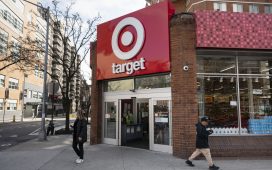Britain boasts many companies that can fairly be described as great businesses. They might not get pulses racing, but these consistent performers rarely blot their copybooks and deliver for investors as well as customers.
A number of these quality acts are found in the retail sector. Clothing and household goods retailer Next is one of them. Famous for underpromising and overdelivering, Next’s shrewd management has repeatedly demonstrated its ability to increase profits and earnings. Shareholders have been well rewarded, with buybacks used to amplify those returns.
Greggs, known for its good-value sausage rolls and sandwiches, is another exceptional company that has delivered bumper returns over the years. It consistently reinvests money back into the business, a trait it shares with Next (whose spending includes technology system upgrades, and in recent years buying struggling brands such as Cath Kidston and Jigsaw), and it is in the middle of an ambitious expansion plan to increase the number of its shops and new distribution centres. Both change direction when necessary: Next shelved its groundbreaking catalogue and Greggs is following footfall away from the high street.
Their status as great businesses does not however exempt them from feeling the effect of problems outside their control — the pandemic, for example, or the rising cost of labour stemming from the autumn Budget’s national insurance contribution changes, and subdued consumer confidence. But their inherent strengths leave them well-positioned to come through such trials relatively unscathed.
BUY: Greggs (GRG)
Sales growth faltered in the second half of the year, writes Mark Robinson.
Based on Greggs’ performance during lockdown, you could be forgiven for thinking that the UK market for pastries might be bullet proof, though its latest full-year update shows it is not immune to macroeconomic effects.
The retailer opened a record 226 new shops through 2024, relocated another 53, and shut 28 outlets. Four-fifths of the total estate of 2,618 shops are company-managed, with the remainder under franchise. A net 140-150 shops are expected to open through 2025.
The planned investment in additional supply chain capacity is on track, along with the construction of a new frozen product manufacturing and logistics facility in Derby. None of this comes cheap. So, it’s unsurprising that the year-on-year cash position has declined by £70mn to £125mn.
Despite positive news on prospective shop openings, the fortunes of Greggs are intertwined with high street footfall. Like-for-like sales in company-managed shops increased by 5.5 per cent through the year, but the rate of increase slowed dramatically in the second half as consumer confidence waned.
Stickier-than-anticipated inflation is likely to limit cuts in the base rate through 2025, thereby constraining the growth in disposable income across the economy, while management will also have to contend with increased employment costs. Greggs has previously demonstrated its ability to mitigate cost inflation, and given its value proposition, demand for its product range seems to be largely inelastic. The trouble is that its outlets depend on passing trade to varying degrees, so any general reduction of punters on the high street is problematic, even though the nation might still be in need of comfort food following Rachel Reeves’ maiden budget.
The board reiterated full-year expectations, but the shares were marked down heavily on results day in response to the deteriorating outlook.
HOLD: Next (NXT)
Next is often described as a “bellwether” stock. Its early reporting of Christmas trading has the investment community looking to it for clues about the wider retail sector, writes Michael Fahy.
But they’re looking in the wrong place. Richard Hyman, a retail expert at Thought Provoking Consulting, describes the clothing retailer as “wholly exceptional”, given the regularity with which it beats both analysts’ expectations and the wider market.
Sales for the nine weeks to December 28 were up 6 per cent, against guidance of 3.5 per cent. UK sales grew by 2.5 per cent, as online revenue (up 6.1 per cent) ate into store sales (down 2.1 per cent). Overseas growth powered ahead, though — up 31 per cent during the nine-week period, and 24 per cent for the first 11 months.
Management expects a 10 per cent increase in pre-tax profit for the year ending this month to £1.01bn but once £326mn of expected buybacks are accounted for, pre-tax earnings per share should grow by 11.4 per cent. Add in dividends and shareholders are looking at a total return of 14.2 per cent.
The downside is a much more cautious outlook for next year. Next expects sales growth to slow to 3.2 per cent, arguing that employer tax increases could hit prices and employment prospects in the UK, and that overseas sales growth will moderate to 14 per cent as it slows marketing spend.
Next expects to mitigate most of its own increase in employment costs through price rises and efficiency savings, but said pre-tax profit growth would slow to 3.6 per cent. Once buybacks and dividends are accounted for, however, it should still deliver a total return of 9.2 per cent. Given its tendency towards understatement, brokers including Deutsche Numis and Peel Hunt expect guidance upgrades as the year progresses.
BUY: Marks and Spencer (MKS)
Despite a price war breaking out in the run-up to Christmas over carrots, sprouts and other seasonal vegetables, a key feature of the festive period has been customers’ willingness to splash out.
In such an environment, it’s hardly surprising that Marks and Spencer did well. Like-for-like sales were up 6.4 per cent, with food sales up 8.9 per cent on the back of a 6.6 per cent increase in volumes.
Demand was so strong that chief executive Stuart Machin reported “growing pains” as M&S incurred extra costs trying to keep shelves full. It also reported “slightly higher” markdowns of some perishable items.
Clothing and home sales were also ahead of both the market and analysts’ expectations — up 1.9 per cent on a like-for-like basis.
Although the company refrained from offering much in terms of guidance for the coming year, a downbeat-sounding statement about the economic environment pushed the shares down 7 per cent.
Peel Hunt’s analysts argued this was “overdone”. Although the shares have risen almost fourfold since evidence of a turnaround emerged, following the promotion of Stuart Machin to chief executive in mid-2022, we’d tend to agree. The sell-off has brought the shares back down to 12 times forecast earnings (or 11 times based on its March 2026 year-end).











